









After the entry of Great Britain into the First World War (4 August 1914), the government of Canada issued an order in council which provided for the registration and in certain cases for the internment of aliens of "enemy nationality". Suddenly, and entirely as a result of Government decree, many Ukrainian Canadians found themselves described as "enemy aliens". Over the next six years various repressive measures would be directed against them. Since they were also known at the time by such regional names such as "Galician" and "Bukovynian", or as "Ruthenians", the ethnic identity of these victims of Canada's first national internment operations has sometimes been misunderstood.
Most of the 171,000 Ukrainians living in Canada were, by 1914, settled in the Prairie region, although significant communities began forming after 1905 in Ontario and Quebec, where Ukrainians worked in the timber and mining industries, on construction, and in various factories. Since these immigrants had generally come to Canada from the Austrian crownlands of Galicia and Bukovyna, their citizenship, but not their nationality, could be described as "Austrian" or "Austro-Hungarian". Those so categorized were, under the terms of the same War Measures Act (1914) that would later be used against Japanese Canadians (1941) and the Quebecois (1970), subject to imprisonment in one of 26 receiving stations and "concentration camps" established across Canada or at least to registration as "enemy aliens".
Between 1914 and 1920, 8,579 "enemy aliens" were incarcerated, among them women and children, as reported by Major-General Sir William D. Otter, the Officer Commanding these internment operations for the Department of Justice. Of this number only 3,138, according to General Otter's calculations, could be classed as "prisoners of war", all others being civilians. Of the remaining 5,441, it has been estimated that the vast majority (5,000) were of Ukrainian origin. Over 80,000 others, most of whom were also Ukrainian, were categorized as "enemy aliens" and obliged to report regularly to their local police authorities or to the North West Mounted Police. They were issued with identity papers that had to be carried at all times, the penalty for noncompliance being arrest and possible imprisonment.
However, those records which were preserved suggest that the majority of the so-called "Austro-Hungarians" were of Ukrainian origin). This was certainly the largest East European immigrant community in Canada at the time. Some Poles, Italians, Bulgarians, Croatians, Turks, Serbians, Hungarians, Russians, Jews, and Romanians were also imprisoned or registered as "enemy aliens".
The authorities did receive information to the effect that they were interning Ukrainians who had no sympathy with the war aims of the Austro-Hungarian Empire. In July 1916, for example, a group of Ukrainian-Canadian editors addressed an appeal to the Canadian people. In part, it read:
The Ukrainians...of Western Canada...have found themselves heavily handicapped since the outbreak of the war by the fact of their Austrian birth, which has led...the Dominion Government, as well as Canadian employers of labour, to unjustly class them as Austrians, and therefore enemy aliens. Many have been interned, though they are no more in sympathy with the enemy than are the Poles, for they are as distinct a nationality...which hopes to emerge from the war in the enjoyment of a wide measurement of national autonomy...[yet] Ukrainians in Canada are treated as enemy Austrians. They are persecuted, by thousands they are interned, they are dismissed from their employment, and their applications for work are not entertained. And why? For only one reason, that they were so unfortunate as to be born into the Austrian bondage...
Throughout the war years, numerous other letters, petitions, and memoranda would be addressed to the federal and provincial authorities by Ukrainian-Canadian organizations, all asserting that the allegiance of Ukrainian Canadians lay with the Dominion of Canada and the British Empire. Similar messages were sent by individuals. For example, in mid-November 1914, Paul Wacyk of Komarno, Manitoba, wrote to R. Fletcher, Deputy Minister of the Department of Education in Winnipeg:
I have heard of no movement on the part of the people here which would in any way indicate that they were disloyal to the British Empire.
The word Ukrainian was itself used in official descriptions of the camps (i.e. report on a visit to the Banff Internment Camp, May, 1916 - ) and in newspaper accounts dealing with Eastern Europe during and after the war. Surviving internees reported that they explained to their interrogators the differences between "Austro-Hungarian" citizenship and Ukrainian nationality. Canadian lawyers even addressed letters to camp commandants pointing out that some of those imprisoned, because they did not speak English well, "could not explain [their] nationality", which was probably the only reason they were interned. Even General Otter acknowledged that rather than disloyalty it was the "tendency of municipalities to unload their indigents [that] was the confinement of not a few".
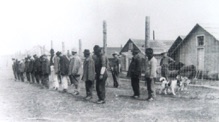
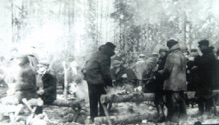

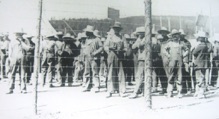
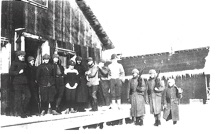
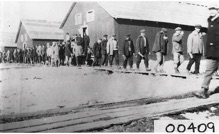

This new website
http://education.holodomor.ca contains research-based, authoritative content and curricular materials on the Holodomor for schools grades K-12. Educational materials ranging from background information for teachers and students, memoirs of survivors, primary documents, excerpts from literature, newspaper articles, as well as a variety of suggested lesson plans and assignments are included. Emphasis is placed on developing historical and critical thinking skills using a variety of strategies which complement the new curricula expectations in a number of provinces. It also includes an extensive list of other web sites, books and films available on the Holodomor for educators.
Holodomor Research and Education Consortium
A project of the Canadian Institute of Ukrainian Studies, University of Alberta
-
‣Home


